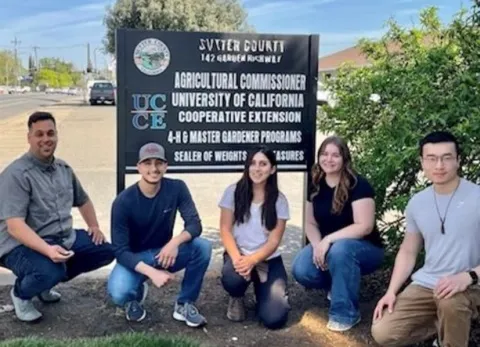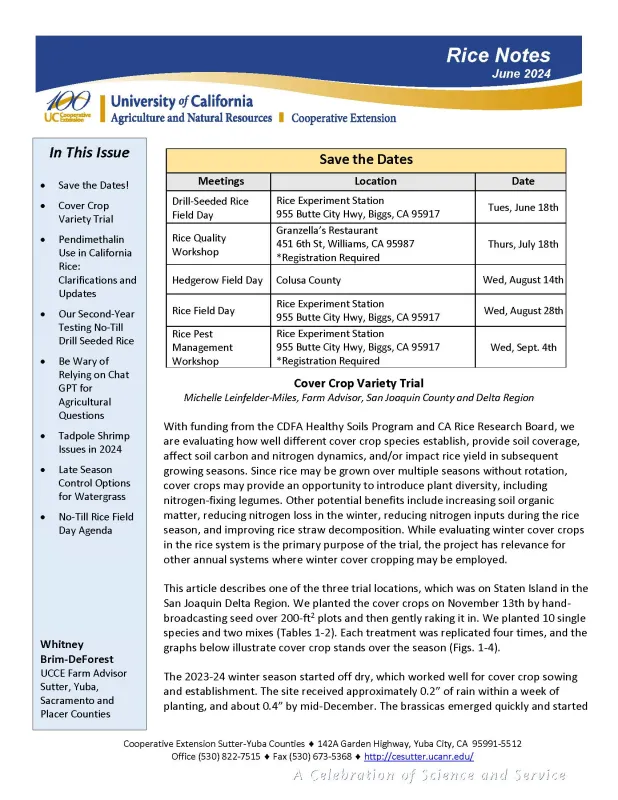Upcoming Meeting Announcement

University of California Rice Project: http://ucanr.edu/sites/UCRiceProject/
UCCE Sutter-Yuba Rice Notes Newsletter: http://cesutter.ucanr.edu/news_204522/Rice_Notes/
Rice Team

A New Issue of Rice Notes is now available!

Like us on Social Media
Contact Information
Sutter-Yuba Counties
Whitney Brim-DeForest
UCCE Farm Advisor
Sutter, Yuba, Sacramento and Placer Counties
142A Garden Hwy
Yuba City, CA 95991
Office: (530) 822-7515
Cell: (541) 292-2419
email: wbrimdeforest@ucanr.edu
